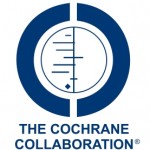
With the increasing numbers of dental implants being placed there is growing interest in the problem of peri-implantitis, as studieshave shown that it could occur it around 16% of those placed. Various approaches to treatment have been used and this latest update of a Cochrane review aimed to identify the most effective interventions for treating peri-implantitis around osseointegrated dental implants.
The authors conducted a systematic search of the usual databases (Cochrane Oral Health Group’s Trials Register, CENTRAL, Medline and Embase) together will handsearching of several dental journals and the bibliographies of the identified randomised controlled trials (RCTs) and relevant review articles. They also wrote to trialists and Internet discussion groups to find unpublished or ongoing RCTs.
9 trials were finally included with follow up periods ranging from 3 months to 4 years.
- five trials looked at different non-surgical interventions
- one trial at adjunctive treatments to non-surgical interventions
- two at different surgical interventions
- and one at adjunctive treatments to surgical interventions
None of the studies was judged to be at low risk of bias.
They found statistically significant differences in two small single trials judged to be at unclear or high risk of bias.
- After 4 months, adjunctive local antibiotics to manual debridement in patients who lost at least 50% of the bone around implants showed improved mean probing attachment levels (PAL) of 0.61 mm (95% confidence interval (CI) 0.40 to 0.82) and reduced probing pockets depths (PPD) of 0.59 mm (95% CI 0.39 to 0.79).
- After 4 years, patients with peri-implant infrabony defects > 3 mm treated with Bio-Oss and resorbable barriers gained 1.4 mm more PAL (95% CI 0.24 to 2.56) and 1.4 mm PPD (95% CI 0.81 to 1.99) than patients treated with a nanocrystalline hydroxyapatite.
They concluded
There is no reliable evidence suggesting which could be the most effective interventions for treating peri-implantitis. This is not to say that currently used interventions are not effective.
There is no evidence from four trials that the more complex and expensive therapies were more beneficial than the control therapies which basically consisted of simple subgingival mechanical debridement. Follow-up longer than 1 year suggested recurrence of peri-implantitis in up to 100% of the treated cases for some of the tested interventions. As this can be a chronic disease, re-treatment may be necessary. Larger well-designed RCTs with follow-up longer than 1 year are needed.
Esposito M, Grusovin MG, Worthington HV. Interventions for replacing missing teeth: treatment of peri-implantitis. Cochrane Database of Systematic Reviews 2012, Issue 1. Art. No.: CD004970. DOI: 10.1002/14651858.CD004970.pub5.

[…] Dental Elf – 26th Jan 2012- No reliable evidence to suggest which is the most effective treatment … […]